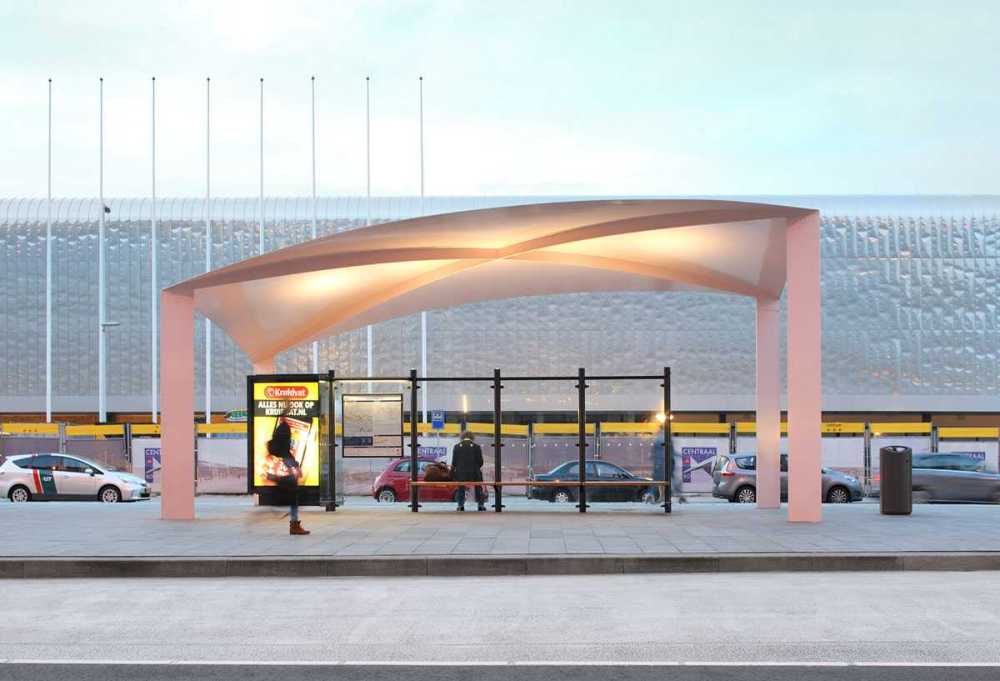庞大的预算和巨大的能源用于在阿姆斯特丹,海牙,乌得勒支和鹿特丹的主要荷兰火车站的升级。创造有关公共交通的质量环境的努力不应仅限于车站建设本身。只有注意铁路枢纽周边的所有公共空间,交通导向发展的承诺就会继续存在。 Maxwan对鹿特丹中央区的计划非常重视公共空间的质量。
旁边的火车站一个新的公交车站正在形成。假设这个预算太少,只能考虑标准的公共汽车站。 Maxwan向客户建议,即使在很小的预算内,也可以设计和建造标志性的檐篷。
结果是一系列卓越的桌形檐篷,绰号枕头和吊床。每张桌子由一个5 x 10米的剃刀薄屋顶放置在钢柱上,使等待公共汽车的意想不到的经验。这些表面采用皮肤色调处理,呈现出扭曲的丝绸光泽表面,能够吸引悬挂布和风吹风帆的图像,尽管它们的重量为5吨。
Large budgets and huge amounts of energy are spent on the upgrading of major Dutch railway stations in Amsterdam, The Hague, Utrecht and Rotterdam. The efforts at creating quality environments related to public transport should not be limited to the station building itself. Only by paying attention to all public space surrounding the railway hubs, the promise of Transport Oriented Development will be kept alive. Maxwan’s plans for Rotterdam Central District put a lot of emphasis on the quality of that public space.
Next to the train station a new bus station is taking shape. It was assumed that the budget for this was too limited to consider anything but standard bus shelters. Maxwan proposed to the client that even within a small budget, signature canopies could be designed and constructed.
The result is a series of remarkable table-shaped canopies, nicknamed pillow and hammock. Each table consists of a 5 x 10 meter razor-thin roof placed on steel columns in a way that makes waiting for the bus an unexpected experience. The tables, treated with a skin tone finish, are warped, silk-gloss surfaces that conjure up images of suspended cloth and wind-blown sails, despite their weighing 5 tonnes each.

















